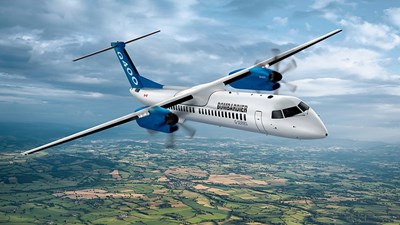Traditionally, local airports have struggled to maintain a competitive edge. The logistics are undeniable. Regional airports tend to be easier to get to, and generally offer cheaper parking than the large airports.
However, that benefits consumers, not the airport and airlines. As a rule, regional airports have higher costs because they can’t command the same discounts on fuel and other costs as large airports.

In addition, fewer airlines using smaller airports decreases competition, pushing prices up for the customer. Of course, this also leads to limited route availability.
Fortunately, turboprop engines, such as those made by ATR, are helping to breathe new life into local airports.
Reducing Operating Costs
A Turboprop aircraft is cheaper to build. They are also cheaper to run, especially on short-haul flights, as the engines are more efficient than jets at low altitudes.
The result is lower overheads for airlines. This allows them to reduce ticket prices, improving their competitiveness with large airports and making them generally a more attractive option to consumers.
It’s worth noting that turboprop engines produce approximately 45% less CO² than jet engines. Using them is a step in the right direction for the aircraft industry.
Increased Competitiveness
As more airlines purchase turboprop aircraft and benefit from the savings, more airlines will be prepared to offer flights from local airports. This will increase competition between airlines, forcing ticket prices down.
Naturally, this will attract more consumers, which benefits the airport. It becomes more popular and, alongside generating better purchasing discounts, it may even have the opportunity to expand. This will improve the services they can offer and make them even more competitive.
Different Routes
Local airports are actively promoting the available options for turboprop aircraft. This encourages airlines to purchase turboprop aircraft and use them at local airports. In turn, this allows airlines to increase the variety of routes they can offer.
The result is more options for consumers and more customers for the airport.
Comfort
Turboprop aircraft tend to be smaller, and the engines are significantly cheaper to make than jet engines.
This has led to some businesses spending some of their savings on improving the comfort and facilities inside the plane. It allows them to offer a premium service, which can be very appealing to many customers.
This service is easier to offer from smaller airports as it feels more personal.
Airlines are also realising that turboprop aircraft allow them to offer private flights at realistic prices. This approach has opened up private flights to a greater percentage of the population.
Naturally, people want private flights to act like taxis, taking them as close as possible to the destination. That’s easier with turboprop aircraft as they need less space to take off and land.
Summing Up
Turboprops aren’t something new on the market, however, these engines are gaining a lot of traction lately as airlines appreciate the cost savings they offer and the option to offer more flights.
When airlines purchase more planes, they need somewhere for them to take off and land. Local airports are the logical choice, which is why they are experiencing a revival.

